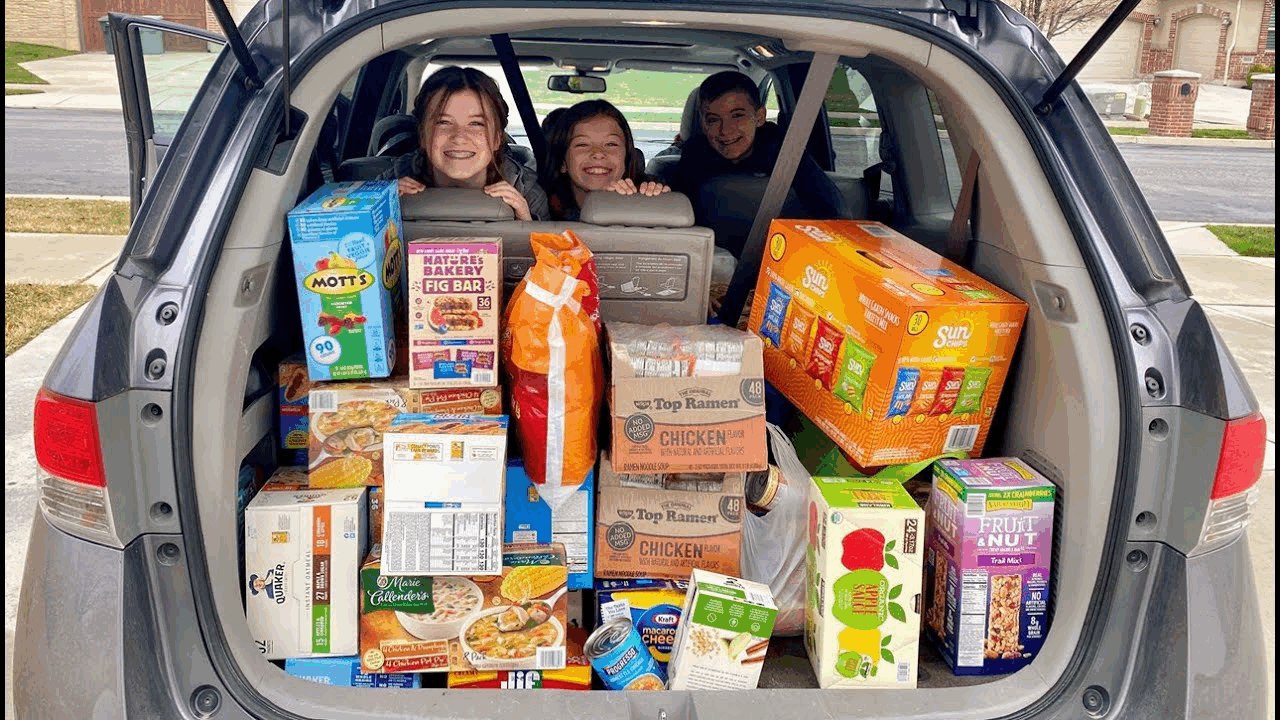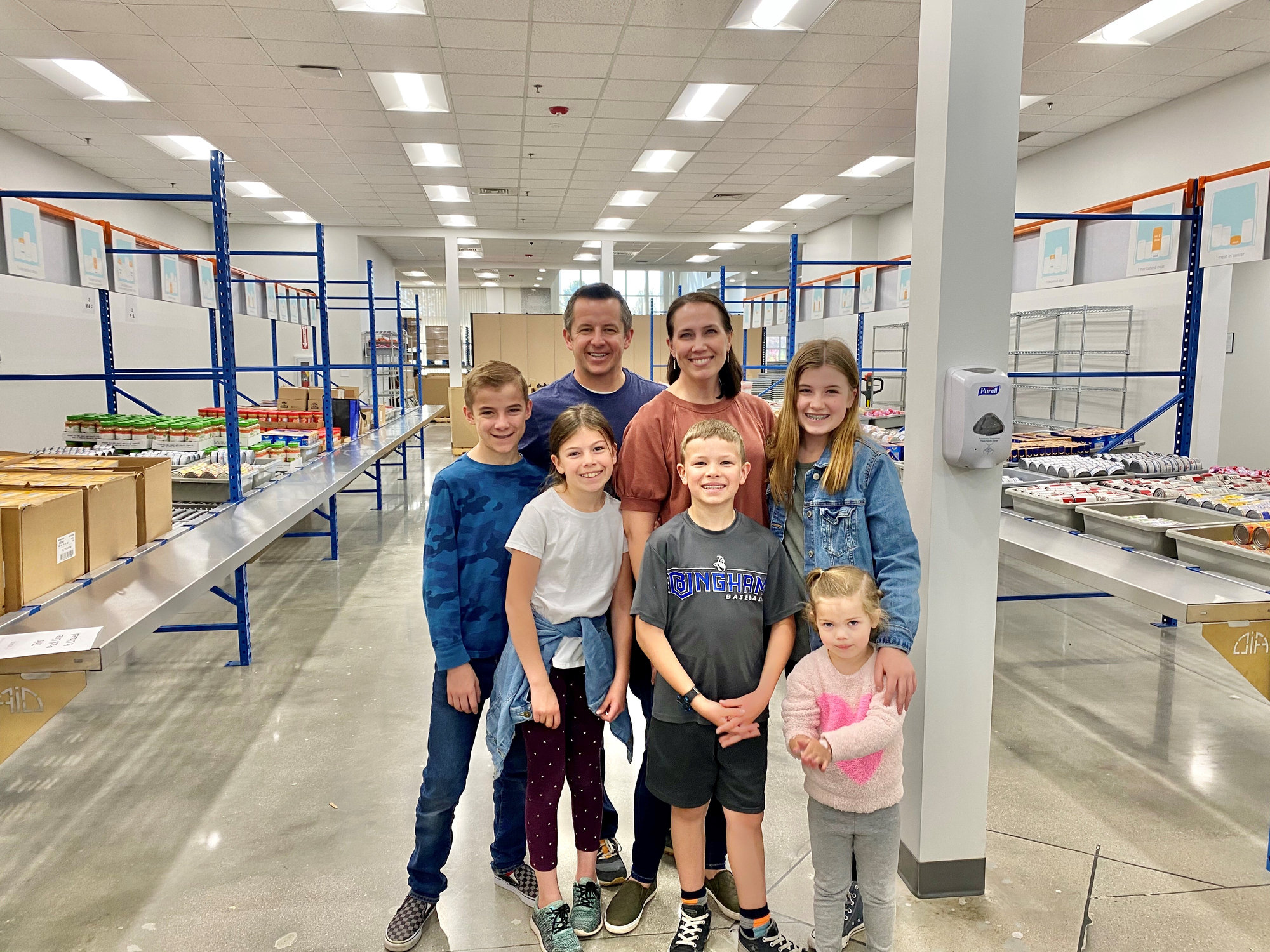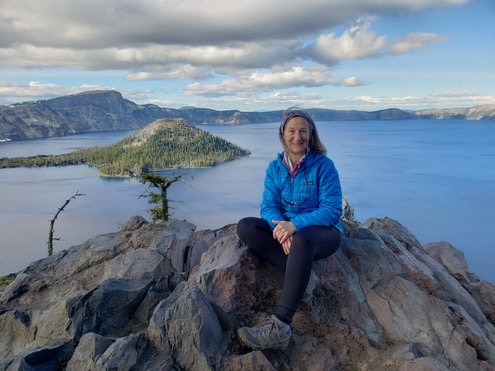How one Utah family gets creative about feeding hungry children

To feed hungry children during the pandemic, Amanda Millerberg recommended grants to cover the cost of 280 bags of food for local families at local nonprofit USANA Kids Eat—then she and her family of seven showed up to pack the bags themselves.
During a time when in-person teamwork was tricky and volunteers were suddenly scarce, Millerberg, her husband, Spencer, and their five children could form a quarantine-safe assembly line, right down to their 4-year-old daughter handing out empty food bags to be packed.
And the Millerbergs didn’t stop there: To multiply the impact of their giving, Spencer and Amanda took to social media, recruiting friends and neighbors to pitch in.

Thanks to an outpouring of support from around the community, USANA Kids Eat’s COVID-19 food program was 100 percent locally funded.
“We wouldn’t be able to do this without families like the Millerbergs,” said Michelle Benedict, Development Manager at USANA Kids Eat. “They’re the heart of our program.”
As United States unemployment numbers remain bleak, nonprofits focused on food insecurity are scrambling to meet increased demand at a time when many have lost their regular sources of funding. Donors who go above and beyond can mean the difference between a successful, all-community-funded COVID-relief program like the one that the Millerbergs support and helped promote at USANA Kids Eat—and having to close doors or turn people away.
For Millerberg, her COVID-relief giving was also a personal milestone: overcoming analysis paralysis perfectionism to make her first steps into larger-scale philanthropy.
“I don’t feel like I’m a philanthropy expert—I have a lot to learn, and there’s no one right way to give,” Millerberg said. “But the country is in crisis mode. This is the moment for all of us to be generous. I finally realized that giving doesn’t have to be perfect, it just needs to happen.”
Building generosity as a family

Even before they were able to focus on philanthropy, Millerberg and her husband, Spencer, created a family mission statement to serve as a compass for their kids: “A Millerberg is kind, hardworking and faithful.” They saw generosity as a way of life, and regularly participated in service projects as a family. The goal: raise children to become adults who are empathetic, aware and responsible.
“We want them to learn to recognize the needs of others, and have the ability to figure out how to help efficiently and effectively,” Millerberg said. “You can’t turn that stuff on all the sudden when they turn 18—you have to give them the life experiences they need to strengthen those muscles first.”
Following the sale of Spencer’s software company, One Click Retail, the family set up their donor-advised fund with Fidelity Charitable. When Millerberg began to research philanthropic giving, she found the depth and range of needs—and organizations striving to meet those needs—overwhelming. An invitation to participate in Fidelity Charitable’s Next Gen Fellows program for emerging philanthropists under 40 gave Millerberg an opportunity to seek guidance on how to maximize her giving, as well as gaining insight into her charitable goals, passions and values.
As an alumnus of the program, she continued to research smart philanthropy and build a missiondriven, values-based portfolio, gaining confidence every time she recommended a grant. She began to develop a diverse giving portfolio, with a particular heart for fighting child hunger. She also prioritized local charities that offered volunteer opportunities for the whole family.
Then came breaking news: growing numbers of COVID-19 cases were being identified in a suburb of Seattle. The United States was now the next wave of a global pandemic—and giving was about to become more important than ever.
Using social media—and more—to multiply impact

The pandemic put Millerberg’s giving research to the test right away. She identified the fight against child hunger as a top priority, then researched and interviewed local nonprofits to gauge effectiveness, efficiency and volunteer needs. When she selected organizations like USANA Kids Eat, she recommended grants right away.
She and her children, ages 4 through 14, organized a food drive for Salt Lake City-based nonprofit For The Kids, spreading the word through Facebook and collecting enough to fill two cars. And as the pandemic continues to alter lives around the country, the Millerberg family shows up regularly to offer volunteer efforts to local nonprofits.
For the Kids was one of many local organizations that feared they would have to shut their doors right when they were needed most. Requests for their meal bags for food-insecure children went from about 350 per week to more than 600, according to executive director Minda Zoloth.
“Our board said, ‘well, we’re just going to feed as many kids as we can with the money we have—and when the money runs out, then we’ll have to shut our doors,’” Zoloth says. “Then people like Amanda came through and said, ‘we see what you’re doing, and we want to help you help our community get through COVID.’”
Passing along the spirit—and the experience—of giving
The Millerberg family used to be very private about their giving, until Amanda realized that her experience of feeling overwhelmed as a beginner philanthropist was common—and that sharing her experience could help others overcome that barrier and multiply their ability to help others.
“We won’t be able to help everyone ourselves, but we realized that we could be an encouragement for others to join in and make even more of an impact,” Millerberg said.
That kind of big-picture vision is vital during a time when community needs continue to grow and uncertainty is rampant.
“When you meet people like Amanda and her family, it gives you hope,” Zoloth said. “These are people who care, and who can get other people to care and help…and then it becomes a whole community helping kids together.”

This testimonial and the statements and opinions expressed in this article are based on an interview with NAME who provided permission to use his/her name (and the name of his/her firm). This testimonial statement is not indicative of future programs and/or services and may not be representative of the experience of all donors.
Fidelity Charitable is the brand name for the Fidelity Investments® Charitable Gift Fund, an independent public charity with a donor-advised fund program. Various Fidelity companies provide services to Fidelity Charitable. The Fidelity Charitable name and logo, and Fidelity are registered service marks of FMR LLC, used by Fidelity Charitable under license.
Want more info before you open a Giving Account?
Sign up to receive occasional news, information and tips that support smarter philanthropic impact through a donor-advised fund.
Be like the Millerbergs: Here’s how.
- Bring other people to the party. Because Amanda and Spencer Millerberg used their social media network, their personal giving was only the start of their impact to help causes and nonprofits they care about.
- Involve your family. The Millerberg kids follow a family values statement and a giving mission statement. The family references these as they come up with creative service projects, and during their regular volunteer time.
- Be fearless (not a perfectionist). There’s a lot of need in the world, and your first foray into philanthropy can feel overwhelming. Amanda used Fidelity Charitable resources like webinars, giving advisors and research and insights articles, plus some of our recommended tools for researching charities.
- Just start. The best time to give is now—as Spencer often says, “if not me, then who? If not now, then when?"
How Fidelity Charitable can help
Since 1991, we have been a leader in charitable planning and giving solutions, helping donors like you support their favorite charities in smart ways.
Or call us at 800-262-6039



